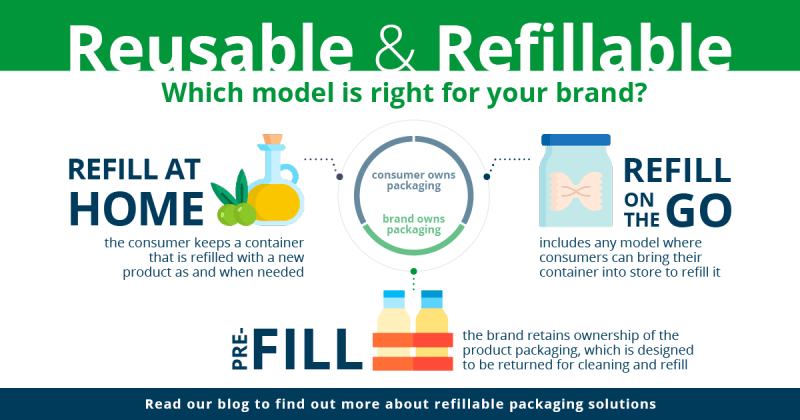Lee Metters, Group Business Development Director, Domino Printing Sciences (Domino), explores the topic further in the below article.
In recent years, governments worldwide have emphasised the need to shift towards a circular economy for packaging, with a particular focus on phasing out single-use, virgin, and unrecyclable plastics and exploring options for reusable products and refillable packaging.
Many brands have also established ambitious commitments to make their packaging more sustainable by 2025. More than 500 organisations have signed up to the Ellen MacArthur Foundation’s New Plastics Economy Global Commitment, which recognises that reuse models should be explored to reduce the need for single-use plastic packaging.
However, while the drivers for adopting refill and reuse models are clear, the fundamentals of implementing such packaging solutions, while ensuring regulatory compliance, connecting with consumers, and gathering data for business insight are not necessarily straightforward. Particularly in coding and marking, different models may require different approaches to product labelling, as Lee Metters, Group Business Development Director, Domino Printing Sciences (Domino), explores.
Opportunities for brands exploring refill and reuse models
The Ellen MacArthur Foundation suggests that, globally, replacing just 20% of single-use plastic packaging with reusable alternatives offers an opportunity worth at least USD 10 billion.
The benefits include the obvious cost reductions associated with reduced packaging and transportation yet reuse and refill models can also help to improve the overall consumer experience, build brand loyalty, and generate valuable data and insight to help inform business decisions.
However, the various consumer-facing reuse and refill models will present different options and opportunities for brands and demand different product labelling information and methods.
Refill-at-home
With a refill-at-home model, the consumer keeps a container that is refilled with a new product as and when needed. Refill-at-home is typically suited to the soft beverage and home and personal care sectors. Examples include bulk buy and standard-size refill pouches, and compact size refills, including pods, tablets, and concentrates, which can be diluted with water at home.
Refill-at-home models can work for both online and traditional brick-and-mortar retail – though there are significant benefits for brands operating in the ecommerce space. When unrestrained by shelf space, brands can take the opportunity to provide more options and greater customisation for customers and can offer products as part of a subscription service to build brand loyalty and encourage repeat sales.
Refill packs will be subject to the same coding and marking requirements as traditional consumer products – though with compact size refills, the code may need to be printed at a fraction of the size of the original packaging. Brands exploring refill-at-home models could consider utilising 2D codes, such as QR codes. 2D codes could provide further information to consumers, including instructions for use or refill or personalised waste reduction statistics.

